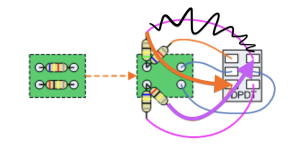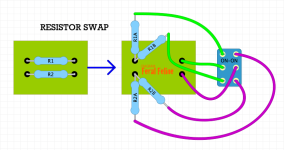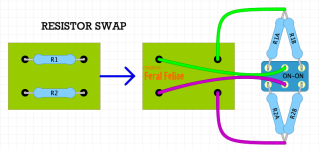hi folks, i'm relatively new here, so if there's already a thread on this that comes mind, i'd appreciate a link.
i'm looking into building a klon, but making some tweaks with popular mods. a toggle for clipping diodes, a toggle for a fat switch, and the one i need help with, a switch to change the value of 3 resistors in the chain. i've read as many things as i can find on switches, and i haven't quite found the answer for this. is it even possible?
thanks
i'm looking into building a klon, but making some tweaks with popular mods. a toggle for clipping diodes, a toggle for a fat switch, and the one i need help with, a switch to change the value of 3 resistors in the chain. i've read as many things as i can find on switches, and i haven't quite found the answer for this. is it even possible?
thanks






